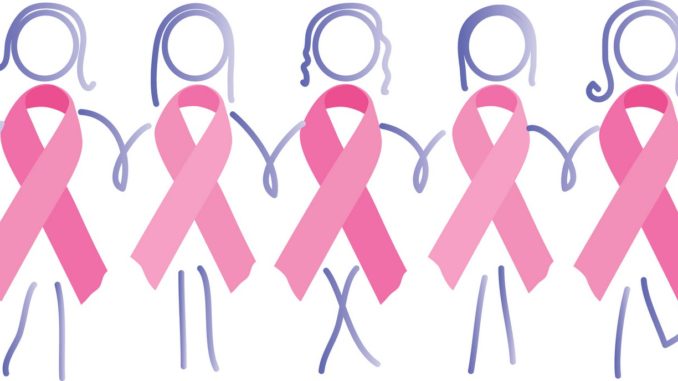
Jenna Palmisano
Contributing Writer
10/16/18
October is Breast Cancer Awareness Month, as you may already know. We see pink things everywhere: pink t-shirts, pink fake hair extensions, and lets not forget those little pink ribbons. Everything is pink and we’re told that it’s because we’re supporting those with breast cancer.Unfortunately, that’s just about it. So, what does it all really mean?
Let’s start from the beginning. What exactly is breast cancer and how does it form? According to the Centers for
Disease Control and Prevention (CDC), breast cancer is a disease where cells grow out of control in the breast. Simple, right? As the disease worsens, the cancer can spread outside of the girls to different parts of your body, which means that the disease has metastasized.
Now, it is important to know what some symptoms look like for breast
cancer. Some warning signs include:
• ●New lump in the breast or
underarm (armpit).
• ●Thickening or swelling of part of
the breast.
• ●Redness or flaky skin in the nipple
area or the breast.
• ●Nipple discharge other than
breast milk, including blood.
• ●Any change in the size or the
shape of the breast.
• ●Pain in any area of the
breast (CDC, 2018).
However, there are ways to find early signs of breast cancer. Self-examinations can help detect the disease earlier. It is recommended that adult women of all ages perform self-breast examinations at least once a month.
According to the National Breast Cancer Foundation, “forty percent of diagnosed breast cancers are detected by women who feel a lump, so establishing a regular breast self-exam is very important.”
Using the pads of your fingers, move around your entire breast in a circular pattern from the outside in, checking even the armpit area. Feel for any lumps, thickening, or knots.
In front of a mirror, inspect your breasts with your arms at your sides and then
arms overhead. Make sure to look for any changes in contour, swelling, dimpling, or changes in the nipple.
Finally, lay down. Using your left hand, move the pads of your fingers around your right breast gently in small circular motions covering the entire breast area and armpit. Use light, medium,
and firm pressure. Squeeze and check the nipple for discharge. Repeat.
Of course, one cannot rely on self-examinations alone. Remember, always consult your doctor if you have any signs that may worry you. Don’t stay scared! Reach out to a professional and find out what’s going on with the girls.
Breast cancer is not just about sporting pink clothes and hair (although it is quite fun!). Rather, it is a serious disease that affects 1 in 8 women, according to the National Breast Cancer Foundation Inc. It is very important to remember that, although rare, males can develop breast cancer as well. According to the CDC, about 2,100 men get diagnosed with breast cancer each year (CDC, 2018).
Support both women and men who can develop this disease and do yourself a favor and check your
breasts before you wreck your breasts.
*All self-examination steps were found at nationalbreastcancer.org. Go there and check out more ways to protect your girls!
palmjenn@my.dom.edu


